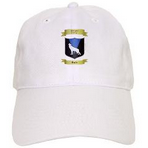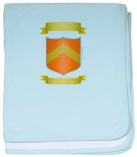Who can see your post?
Your post will show up in News Feed, on your profile and in search results.920,140 Global WHITE Family Members
| Days | Hours | Minutes | Seconds |

Sunday 9th November
2pm (New York), 7pm (Ire)
| Days | Hours | Minutes | Seconds |

Sunday 9th November
2pm (New York), 7pm (Ire)
Our in-person family gatherings
Our TEDx talk about family gatherings
Family spelling variants includes Wight, Whiteson, Wythe, Witts, Witt, Witte, Whitta, Whitt, Whites, Whyte
WHITE Family History
This surname has two main origins. The first relates to the nickname of an ancestor, and comes from the Old English 'wit' or Anglo-Saxon 'hwit', and would mean in this context someone who had fair hair or a pale complexion.
The second derivation has a topographical root, and in this sense would refer to an ancestor who lived by a bend or curve in a river or road, as the Old English 'wiht' meant 'bend'. This is the origin of the place name Great Whyte near Ramsey in Cammbridgeshire.
Early bearers of the surname include Alestanus hwit and Alwin Wit of Hampshire who are both named in the Domesday Book of 1086; Lewinus Wite of Staffordshire who, in 1114, was named in the Burton Chartulary; and Hugo Wit who in 1190 was living in Bury Saint Edmunds, Suffolk.
It is a surname that is fairly popular in Scotland, where it also derives from the Old English 'hwit' although in some cases it also stems from an anglicisation of the Gaelic M'Illebhàin (MacChillebhilin). Early records name Adam Quhyt who was granted the charter of the lands of Stayhar in Ayrshire by Robert I (1274–1329), Gilbert Qwhyt who was bailie of the burgh of Rutherglen in 1376, and Thome White who held land in Irvine in 1426.
It is less frequently seen in Wales on the old records, however there are nevertheless late 16th and early 17th century references to it on the registers of parishes near to the border with England, in particular in the counties of Flintshire, Montgomeryshire and Monmouthshire, as well as in some market and port towns elsewhere in the country, including in the county of Glamorgan.
In 1891 census, there were 94,312 occurrences in England and Wales and a further 8,939 in Scotland.
In 1881, the surname was widespread across England. In Kent for example there were 3,926 occurrences of the surname on that year's census.
In 1881, White family members primarily worked as agricultural and general labourers, and farmers.
Today there are approximately 920,140 White family members around the world. It is estimated that the largest group lives in the USA with 660,491 (71.8%) members, followed by England with 98,791, Canada with 52,381, Australia with 51,916, South Africa with 27,122, Ireland with 9,513, Scotland with 8,191, New Zealand with 6,565, and Wales with 5,170 members.
White Family From Wexford
THE Whites have been in South Wexford from early Norman times when they established their chief seat and built a castle at Trimmer, in the modern parish of Tagoat. When their arms and pedigree were investigated by the Ulster King of Arms, on his visit to Co. Wexford in 1618, it was found that the Whites had been at Trimmer for five generations, i.e., from late in the fourteenth century or early in the fifteenth century.
The earliest record of the name in Wexford refers to Robert le Whyte in 1280. An inquisition taken at Clonmines in 1306 names Ralph, John and Richard le Whyte.2 In 1370 Thomas Fitzwilliam White and Isobel, his wife, were granted 410 acres at Trimmer.
There are many other references to Whites in Hore's History, e.g., Patrick Whyte, Provost of the town of Wexford in 1396, William White of Selskar in 1420-21; James White appointed Justice of the Liberty of Wexford in 1540; John White of 'Tromer' (Trimmer) in 1561; Nicholas White of Tromer, one of the gentlemen of the Barony of Forth in 1608. Nicholas White at Whitestown (Bannow) in 1640; Richard White, a merchant in New Ross, M.P. for Clonmines in 1689.
Alderman Martin White was Chief Magistrate (or Mayor) of Wexford in 1640. When the great rebellion began in 1641, he was appointed a Captain in the Confederate forces in Wexford town and was indicted for high treason.
Nicholas White owned 80 acres at Trimmer at the time of the Cromwellian take-over, but being a Protestant he was permitted to hold on to his lands. These were later granted (1688) by the Trustees of Forfeited Estates to Benjamin Neale who had already secured the lands of Richard White, 'Irish Papist', of Ballymurragh. (Book of Survey and Distribution). The Whites owned Trimmer till 1689 when Nicholas White was attainted, and his property forfeited.
In the reign of Charles II. John White and three younger brothers, Robert, Laurence and Richard 'of an ancient and respectable English Family’ purchased lands in Wexford and Wicklow. This John White was ancestor of Lieut.-Colonel Henry James White, who bought Healthfield,
near Killurin, in 1890.
Robert White, of Ferns, who died in 1680 and who was interred in the cathedral there, left his estates to his brother Johnof Askamore. This family also held lands at Ferns, Ballyellis, Whitefield, Scarnagh, Assally and Ballyrane. John White, of Whitefield, who was a magistrate, and Edmund White of Castle White, were killed in 1798.
Whites of Neamstown (Kilmore) were the last tenants of the Little Saltee Island. Robert died in 1898 and his sons, William and Richard. continued to farm this island. William is listed as tenant in various leases down to 1945.5
Within the south transept of the ruin of St. Mary's Church, New Ross, may be seen a fine altar tomb, erected to John White, burgess, bearing the date 1569. It commemorates a member of an illustrious family, long and honourably connected with the town. Among the civic records - the minute books of the old Corporation - the name frequently occurs during the seventeenth century.
Dominic Whyte was Sovereign (Mayor) of Ross in 1649. We find Patrick White occupying this position during the years 1687, '88 and '89. He was the first Sovereign to be called Mayor (probably in accordance with the new charter of James II).
The Whites were large merchants and ship-owners who carried on trade with Spain, which was then an important element in the commerce of Ross. A branch of the White family was also connected with Waterford, whence some of them went to Spain and the Canaries where their descendants continued to be known under the name Blanco (which means white).
Edward White of Nickaree, Duncormick, was a member of the old Wexford Board of Guardians. Alice Kinsella (nee White) was secretary to the Commanding Officer of the American Naval Air Base at Ferrybank, Wexford, 1917-1919.
The name is best known in Wexford as that of White's Hotel, established in 1779. John White was running the hotel at the time of the '98 Rebellion and took refuge on a boat in Wexford Harbour when the hotel was occupied by the military. He took over the hotel from William Robinson in 1807. He was succeeded in 1843 by his son William who carried out considerable improvements and developed the hotel's coach business. The late Dr. George Hadden, an authority on Wexford history, believed that John White may have been a descendant of the Trimmer Castle family who were the probable builders of White's Castle in Trimmer Lane near White's Hotel.
The name is still prominent in the county. James, proprietor of a bakery and confectionery business in Main St., Wexford, until 1979 is secretary of the Wexford Racecourse company and of the Wexford and District Coursing Club. His father, John White, Sallyville P (died 1943), was secretary of the Wexford Harbour Board from 1928 to 1942, and Lloyds agent in Wexford for many years. He was manager of The Free Press from 1911 to 1922 and of The Carlow Nationalist for a period. He was a member also of the old Wexford Operatic Society and played in a number of their productions.
James White's grandfather, Martin White, was a Customs Officer at the Fort which formerly existed at the entrance to Wexford harbour. His uncle, Nicholas White, Newtown, Kilmore (died 1916), was proprietor of The Wooden House in Kilmore Quay for twenty-five years. He is described in his obituary as 'one of the old stock who in his early years displayed an active interest in all matters of national and local importance.
SOURCES:
1881, 1891 Census
Dictionary of American Family Homes, P Hanks OUP 2003
Homes of Family Names in Great Britain, H.B. Guppy, London 1890
The Oxford Dictionary of Family Names in Britain and Ireland, P.Hanks, Coats, McClure OUP 2016
1860 Lower, Mark A Patronymica Britannica: a dictionary of the family names of the United Kingdom, London: J.R Smith. Public Domain
1857 Arthur, William An Etymological Dictionary of Family and Christian Names. New York: Sheldon, Blakeman. Public Domain
The Surnames of Scotland (1946) by George Fraser Black (1866-1948)
Select Audience
-
Public
Anyone on or off Wales101 -
Friends
Your friends on Wales101 -
Specific
Only show to some friends -
Only me
Only you can see your post
Tag People
-
Kane William
-
John Micky
-
John william
-
John Smith
-
John
Create Life Event

White

jacquelyn stokes

Anthony Barrett

Anthony Barrett

Anthony Barrett
Areas of Origin for WHITE
Invite more WHITE family members!
Write an email address and click 'Invite' to share this page with more members of the WHITE tribe.
Log in or Register to invite others
Family Coat of Arms Generator

Why not see what your family crest could look like based on your own family characteristics?
Create CrestJoin the Irish Learning Rooms
Show off the WHITE Family Crest…
Wear your crest with pride...plenty of products to choose from













_(2).jpg)